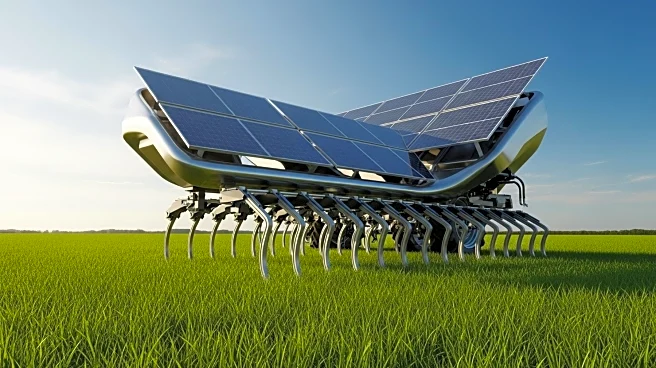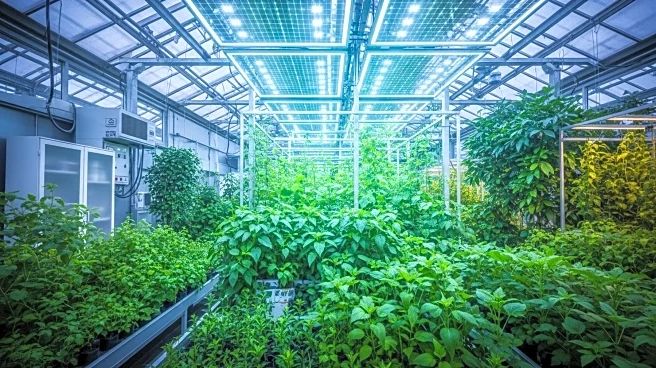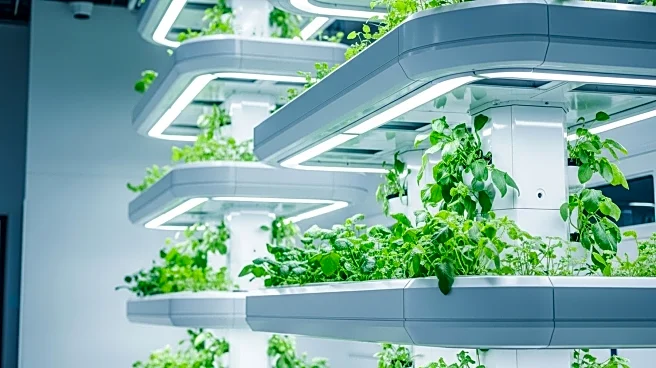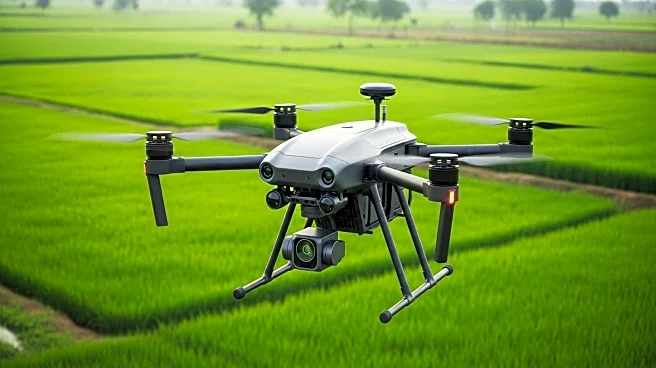What is the story about?
What's Happening?
Researchers from Technische Hochschule Ingolstadt in Germany have developed a tool to optimize crop selection for agrivoltaics projects across 25 countries. This tool analyzes 12 staple crops' responses to climatic changes, growth, shading, and water and space requirements. Agrivoltaics combines agriculture with solar energy, aiming to maximize yields and sustainability. The tool uses Global Horizontal Irradiance data to identify optimal crops for solar energy zones. Vegetables, berries, and fruit trees benefit from solar panels' protection against wind and heat, reducing water evaporation. The study suggests that agrivoltaics are ideal for small-scale farming communities due to their lower space requirements and potential for extra income from solar energy sales.
Why It's Important?
The development of this tool is crucial for advancing agrivoltaics, which can significantly enhance food security and energy efficiency in agriculture. By optimizing crop selection, farmers can achieve higher returns on investment and contribute to sustainable farming practices. The integration of solar energy with agriculture offers a dual benefit of conserving land and water while generating renewable energy. This approach is particularly beneficial for small-scale farmers and rural communities, providing them with opportunities for economic growth and environmental conservation. As agrivoltaics gain popularity, they could revolutionize farming practices globally, promoting sustainable development and energy independence.
What's Next?
Future research is expected to focus on AI-driven optimization techniques, real-world pilot studies, and advanced agronomic assessments to refine decision-making in agrivoltaics deployment. As more agricultural operations seek to optimize crop growth and reduce electricity costs, the adoption of agrivoltaics is likely to increase. Researchers and policymakers may explore further applications of this technology in different climatic regions, potentially expanding its use beyond the current scope. The success of these initiatives could lead to broader implementation of agrivoltaics, influencing agricultural policies and practices worldwide.
AI Generated Content
Do you find this article useful?













